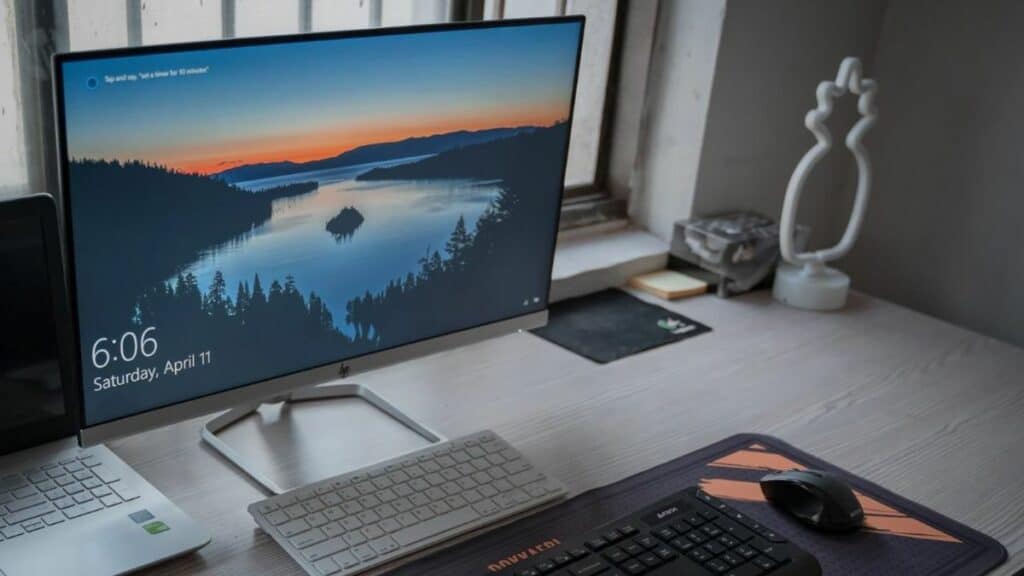Our daily lives now heavily rely on touch panel technology. From digital devices like smartphones and tablets to electronic kiosks in malls, and even control panels in automobiles — it had a significant impact on every aspect of our lives.
However, a large flat screen may not always be sufficient to meet every demand. With the technology improvement and popularity of digital specialties, 15 inch monitors aren’t a luxury anymore but a useful work tool.
While touchscreens can greatly simplify using a device, you must be sure to get the right one for your needs.
Why should you choose the touchscreen?
Since you don’t need to use your mouse or keyboard, a touch screen may become more practical for a set of operations. Also, touchscreens may boast some benefits besides practical approaches, such as pricing.
Advantages of the touchscreen display
First of all, touchscreen monitors offer both gestures and multiple touches in addition to touch commands.
It can be an excellent advantage for people with sight issues as it allows working with a computer without glasses to see everything. Simply adjust the icons/pages scale for your comfort, and you’re ready to go.
Another good advantage is that a touchscreen display can save you some space because it doesn’t require a full set keyboard, mouse, and mouse pad.
And because some touchscreen monitors have in-built computers they can not only save space but be much easier to transport as there are fewer things to move.
Touchscreen monitors can be made possible with different sets of technologies.
Prices
Touchscreen technology is not something exotic, and devices like smartphones and tablets can be found at a wide variety of prices. But if it’s the high-quality touchscreen monitor we are talking about — the choice should be made with care.
Depending on the size, resolution, and options, the prices on the touchscreen display can start from $200 and be as much as $1000.
The ideal price for a budget-friendly but not cheap and low-quality 15-inch monitor should be $400, which is reasonable taking into account the functions and opportunities it gives. This works well if you’re looking for a durable device that will serve you well for ages.
If you are looking for a smaller display, for example, to use in a street kiosk or as a part of some bigger device in general, the prices, of course, will be lower. But you should look into the durability and scratch resistance of such displays. That’s why the technology of build is important.
Main touchscreen technologies
Technologies are not staying in one place and that’s why we can find different variations of touchscreen displays, each with different advantages and prices.
Resistive
Of all the technological methods for touchscreen building, resistive displays are the most widely used.
Such screens are constructed of numerous flexible layers, with air inserted between each layer. The layers slightly bend and connect when touched with a finger, allowing the monitor to see where the touch was made.
Capacitive
Capacitive screens have the ability to detect touches and calculate capacity changes. It detects when and where the user touches the display when a finger (or another form of specialized input instrument, like a pen), comes into contact with it.
And there are also a few types of capacitive displays as well, but we won’t stop on that.
Surface acoustic wave (SAW)
This technology was developed to overcome the poor light transmission of resistive film touch panels.
This type of touch panel detects where a finger makes contact with the screen by measuring the attenuation of ultrasonic elastic waves on the surface. When the finger touches the screen, the waves are absorbed. The location of contact is then established using the data of absorbed waves.
The touchscreen of this type has some benefits compared to the other technologies. Among the most prominent are: excellent light transmittance and improved visibility, along with scratch resistance.
Touchscreens have noteworthy optical benefits, here are the paramount of them:
- This approach in touchscreen building is a collection of a few similar methods.
- The screen can recognize the position of a touch thanks to infrared imaging sensors.
- When an object obstructs the infrared light beam, the sensors can detect touch by receiving the two acquired X and Y coordinates and triangulating the point of contact.
Screen size
The important thing to consider choosing a touchscreen monitor is its size.
A meeting room, for example, can fit a bigger monitor, 50 inches or more, and such size will be very useful for others to see what’s happening on the screen.
However, 50 inches screen can be too much for individual workspace or personal use, a 15-inch monitor with a touchscreen in most cases will be enough for comfortable work. Besides, it will be easier to fit into a smaller space without creating discomfort.
OS compatibility
Among other things, you should also check the compatibility with the operating system you work with when choosing a new touchscreen.
Usually, it’s no problem to just plug in the touchscreen to your computer and it will work just fine, but choosing the touchscreen with a built-in computer needs a little more effort.
Most touchscreen monitors with built-in PC have pre-installed Windows because it’s easier to customize.
So, if you’re used to the Apple ecosystem — better choose the touchscreen monitor without an in-built computer, and simply connect it to your device.
Final thoughts
Thanks to the unstopping progress in the area you can find a perfect solution for your business or private usage as there are lots of offers aimed at different tasks.
Set your priorities. What’s the most important thing about a touchscreen monitor for you? Picture quality, size, price, or maybe the ability to work using a stylus or pen?
